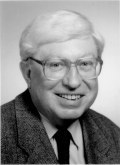
Is flu vaccination a shot in the dark? Regular readers will recall the recent debate on multiple vaccines, statistics, and risk we had here in September. I also have rather close personal experience of one of the risks associated with having the annual flu vaccine – Guillain-Barré Syndrome (GBS). This autoimmune disorder is purportedly associated with a respiratory or gastrointestinal tract infection although there is a statistical risk that connects it to the flu vaccine. A close relative of mine developed GBS symptoms about six weeks after having the flu jab last December and has not yet fully recovered. GBS support groups recommend she not have the vaccine again.
So, it is with mixed feelings that I read an email from Charles Forsyth (a public relations professional at www.btstrategies.com apparently working for the American Lung Association). Charles is helping the ALA raise awareness of the importance of getting an influenza vaccination at this time of year. He explains that part of the campaign involves persuading bloggers and other website owners to add a widget to their site. The widget helps readers find a local flu clinic quickly and easily where they can be vaccinated.
You can try the widget here http://www.flucliniclocator.org and download it to add to your site. Just enter your zip code to find clinics in your area and make an appointment. You could use it to find a clinic for elderly or infirm friends or relatives too or others in high-risk categories, such as asthma sufferers, and those on immunosuppressant drugs.
Tragically, influenza kills about 36,000 people each year in the US, Charles tells me, and requires another 200,000 to be hospitalized. Most of these deaths are preventable by getting a simple flu shot each fall.
The following groups are considered at higher risk than the general population
- People who are 50 years of age and older
- Women who will be pregnant during influenza season
- Young children 6 to 59 months of age [Not sure what changes at 59 months, presumably they just mean under fives]
- People with chronic medical conditions such as asthma, emphysema, chronic bronchitis, TB, CF, heart disease, kidney problems, diabetes, and severe anaemia
- People who have diseases or having treatments that depress immunity
- Caregivers of those at risk
Charles suggested I add the widget to the Sciencebase bird flu symptoms page, but I think that would be a little irresponsible, given that a vaccine against human influenza will most likely provide absolutely no protection against an impending bird flu epidemic. Instead, I’ve added it to my seasonal page on how to avoid colds and flu in the first place. This page rears its ugly head at this time of year on an annual basis, so it’s as good a place to slot the widget as any. I should emphasize though, that if you have any concerns about the protective efficacy of vaccination or the risks associated with the flu jab you should discuss them with your GP.
Oh, and if you think you have flu or a bad cold, don’t spread it around, stay at home.


 Earlier this week, I went to see “one” of my childhood musical heroes, progressively rocking Canadian three piece Rush. The band was on top form as ever and the crowd jostled to the music almost in synchrony like so many atoms in a Bose-Einstein condensate (BEC) as the band raised the energy levels. They played most of their latest album, covering themes of humanism and faith without religion as well as resurrecting some stonkers from their vast back catalogue including the epic Natural Science from 1980 album Permanent Waves.
Earlier this week, I went to see “one” of my childhood musical heroes, progressively rocking Canadian three piece Rush. The band was on top form as ever and the crowd jostled to the music almost in synchrony like so many atoms in a Bose-Einstein condensate (BEC) as the band raised the energy levels. They played most of their latest album, covering themes of humanism and faith without religion as well as resurrecting some stonkers from their vast back catalogue including the epic Natural Science from 1980 album Permanent Waves.
